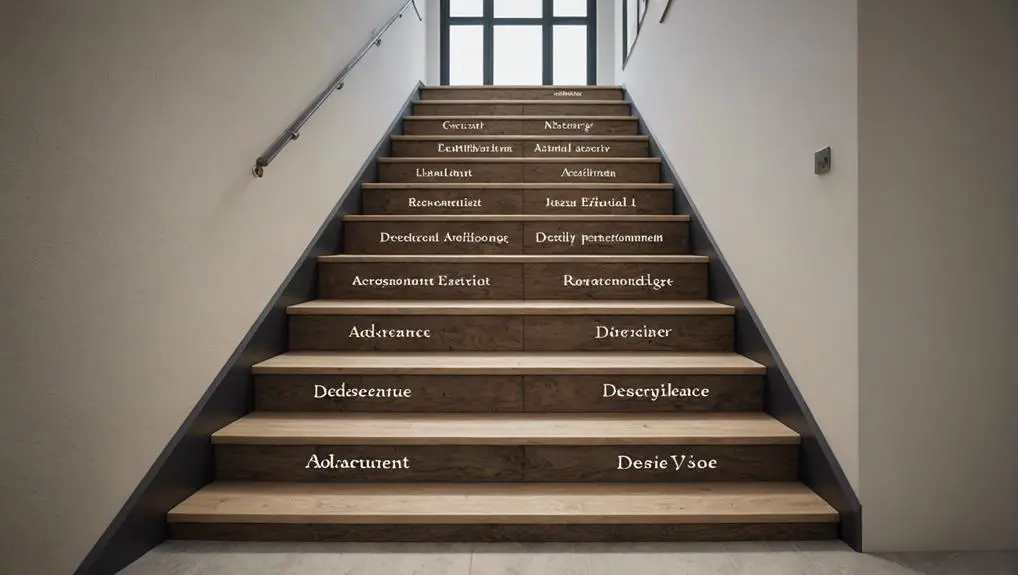Envision an atmosphere where organizations bloom in the face of change, consistently adjusting and developing to meet the ever-evolving demands of the market. Visualize a workplace where employees welcome novel ideas, actively seek out inventive solutions, and are permitted to initiate transformation. This is the potency of constructing a culture of agility through efficient change management.
Change is no longer an option, but a requirement in today’s swift business landscape. It is imperative for organizations to recognize the necessity for change, devise a clear plan, and efficiently communicate it to their teams. By forming a supportive team and embracing a development-oriented attitude, organizations can form an atmosphere that cultivates creativity and advances perpetual enhancement.
Entitling staff is another essential point of change management. When individuals sense valued and enabled, they are more likely to accept change and add to its success. Plus, managing reluctance to change becomes essential, as it is natural for employees to feel hesitant or contrary to fresh methods of doing things.
In this piece, we will investigate the numerous strategies and techniques that can be utilized to construct a culture of flexibility. By following these precepts and initiating effective change management practices, organizations can not only survive but thrive in an ever-shifting business environment.
Recognizing the Need for Change
Are you prepared to accept the call for alteration and build a milieu of flexibility? Grasping resistance and perceiving the necessity of direction are essential stages in effectively applying change within an organization.
Alteration is often encountered with reluctance, as people commonly move towards what is customary and comfy. Nevertheless, recognizing this reluctance is the primary step towards forming a milieu of adjustable. By admitting that alteration is indispensable for expansion and progress, you can start to conquer any initial opposition and progress towards a more pliable and agile mentality.
Leadership plays a critical part in pioneering alteration and creating a milieu of flexibility. Effective leaders not just spot the need for alteration but also motivate and energize others to accept it. They communicate the vision for change distinctly and generate a feeling of urgency among staff. By leading by instance and demonstrating a readiness to adapt, leaders motivate others to do the same.
Recognizing the necessity for alteration and perceiving the importance of leadership are pivotal elements in establishing a milieu of adaptability. By recognizing reluctance and utilizing effective leadership, organizations can get around the difficulties that come with change.
In the following segment, we will investigate the following significant step in this process: forming a clear alteration strategy.
Developing a Clear Change Strategy
In order to cruise through a transition period efficiently, it is important to devise a well-thought-out course of action that plainly details the steps for achieving business objectives.
Assembling a change plan and imposing change strategies are essential components of this procedure. This plan serves as a navigation system for the organization, furnishing a definite direction and purpose for the desired changes. It aids in recognizing the key objectives, timelines, and resources required to back the change initiatives.
To engage the audience and communicate the change plan proficiently, a three-column, five-row table can be utilized. This table can spotlight the main elements of the plan, such as the goals, strategies, and activities needed for each stage of the shift process. By exhibiting information in a systematic and orderly format, the table enables stakeholders to comfortably comprehend and embrace the suggested changes.
An efficient change plan also involves executing change strategies. This comprises recognizing and tackling potential hindrances and reluctance to change, activating resources, and tracking progress. It is important to broadcast the change plan to all stakeholders and involve them in the process to create support and commitment.
Moving on to the following section on effective communication, it is essential to guarantee that the change plan is communicated clearly and uniformly to all members of the organization.
Effective Communication
To effectively transmit your message and guarantee a shared comprehension, it is indispensable to communicate the alteration plan unmistakably and consistently to all members of the organization. Participating in listening is an essential aptitude during this procedure. By willingly hearing your employees’ worries, inquiries, and proposals, you can address their needs and reduce any opposition to change. This will breed a feeling of trust and openness, making it simpler for them to adopt the new bearing.
In addition to participating in listening, instituting feedback circles is essential for efficacious communication. Setting up regular pathways for employees to give feedback and pose inquiries allows for a two-way discussion. This empowers you to acquire profitable insights, recognize potential issues, and make necessary modifications to the change plan. By consolidating feedback circles, you demonstrate that you esteem your employees’ assessments and urge their contribution in forming the change process.
Moreover, it is essential to communicate the alteration plan uniformly across all levels of the organization. This guarantees that everybody is in agreement and avoids any perplexity or misapprehension. Continuity likewise helps to manufacture trust and dependability in the progress initiative.
By joining active listening and feedback circles into your communication system and guaranteeing consistency in conveying the alteration plan, you can create a culture of flexibility inside your organization. This will establish a strong establishment for making a encouraging team that is eager to embrace and drive change.
Subsequently, constructing a helpful team necessitates cultivating a feeling of cooperation and trust among team members.
Building a Supportive Team
Constructing a Supportive Team necessitates stimulation of collaboration and open communication.
Establishing a milieu in which team members feel at ease expressing their notions and doubts will generate a climate of assurance and creativity.
Additionally, supplying instruction and resources for capacity enlargement will bestow your team members with the ability to develop and succeed in their roles, eventually resulting in a more cohesive and high-functioning team.
Encouraging collaboration and open communication
Cultivating a culture of adaptability can be achieved by cultivating a habitat of teamwork and candid discourse. When team members are allowed to offer their ideas and viewpoints, it can lead to fruitful arguments and collaboration towards a unified objective.
Inspiring joint effort allows for the combination of varied perspectives, leading to comprehensive solutions for complex dilemmas. Open communication builds strong faith and guarantees that everybody is well-informed, eliminating misunderstandings and aiding in agreement.
By encouraging collaboration and clear communication, you create the basis for an adaptive and robust team. As you move to the following section regarding providing training and tools for skill development, you can further increase the team’s capacity to comprehend change and excel in a volatile atmosphere.
Providing training and resources for skill development
Ensure your team has the appropriate coaching and tools to sharpen their capabilities and authorize them to survive in an ever-changing world.
Examining competency is essential to spot areas where your team members may need enhancement. By holding frequent reviews, you can construct instruction regimens to address particular skill shortages.
Establish mentoring schemes to offer counsel and assistance, enabling personnel to learn from experienced people in the organization. This not only encourages knowledge transfer but also encourages a cooperative and encouraging atmosphere.
Moreover, delivering resources such as online classes, classes, and industry meetings can further promote skill growth. By investing in your team’s expansion and growth, you are guaranteeing their preparedness for change and fitting them to welcome fresh challenges.
Moving into the next area, fostering a growth attitude is crucial for encouraging adaptability in your team.
Embracing a Growth Mindset
Successfully managing change necessitates a constructive attitude towards it. Adopting a growth mindset implies perceiving change as an opening for development and enhancement rather than a hazard.
Establishing a culture of consistent education and advancement enables you to build a group that is adjustable and willing to embrace change, allowing your organization to thrive in an ever-shifting corporate world.
Encouraging a positive attitude towards change
Embrace transformation with an optimistic outlook and you’ll witness how it can lead to new options. Just like Sarah, who initially opposed a large organizational change but afterwards realized that it gave her a promotion and a chance to cultivate new abilities.
Possessing a positive attitude towards change is prime for success in the present rapidly-changing and perpetually-evolving business world. Here are five essential reasons why growing a constructive outlook towards change is vital:
- Elevated resilience and pliability
- Improved problem-solving capabilities
- Heightened inventiveness and originality
- Broadened personal and occupational improvement
- Strengthened ties and teamwork
By welcoming transformation, individuals and companies can take advantage of the power of alteration and remain ahead of the game. Constructing a culture of flexibility necessitates more than just accepting change; it also implies fostering an atmosphere of everlasting education and enhancement.
Fostering a culture of continuous learning and improvement
Nurture a mindset of perpetual evolution and progression, and you’ll unlock the strength of continuous learning and enhancement. In today’s ever-shifting business landscape, organizations must adopt the idea of ceaseless progression to remain competitive.
Urging employees to take part in lifelong education not only boosts their abilities and understanding but also authorizes them to adjust to new difficulties and opportunities. By fostering a culture of continuous learning and advancement, you form an atmosphere where employees are encouraged to look for fresh knowledge and skills, pushing themselves and the organization ahead.
This perspective permits the detection of inefficiencies, the growth of inventive solutions, and the capability to adjust to fluctuating customer demands. By favoring continuous enhancement and lifelong education, you equip employees to be proactive and adjustable, driving the organization towards success.
Moving into the next section, equipping employees is another essential step in constructing a culture of flexibility.
Empowering Employees
By granting employees power, businesses can uncover their total potential and breed an atmosphere of versatility.
Endowing originality and sustaining autonomy in the labor force is crucial for progressing change and remaining ahead in the contemporary business environment.
When employees are allowed power, they experience a sense of possession and duty for their job, inciting raised inspiration and imagination. This empowers them to discover and seize opportunities for originality and enhancement, propelling the business onward.
One approach to empower employees is by giving them access to the fundamental instruments and resources to shine in their roles. This involves admittance to training programs, workshops, and development prospects that improve their capabilities and wisdom. By investing in their advancement, businesses demonstrate their loyalty to worker success and enable them to contribute more effectively to the organization’s aims.
Furthermore, businesses must generate a supportive atmosphere that boosts open interaction and cooperation. By establishing a culture of trust and mental safety, employees feel comfortable expressing their ideas, opinions, and issues. This not only endorses innovation but also allows for the location and resolution of probable roadblocks to change.
By investing in employees, businesses can take advantage of the collective intelligence and creative capacity of their workforce, allowing them to adjust and thrive in an ever-shifting business environment. This sets the stage for the following section on managing resistance to change, where businesses can tackle any issues that may occur during the change process.
Managing Resistance to Change
Battling opposition to change can be attained by cultivating a supportive atmosphere that promotes open communication, collaboration, and problem-solving. When employees sense heard and respected, they’re more likely to accept transformation and turn into change champions themselves.
These are three techniques to assist in overcoming resistance to change:
- Demonstrate the advantages: Clearly illustrate the rationale for alteration and how it’ll benefit both the organization and the staff. Highlight the positive results and address any qualms or fears that may occur.
- Include employees in the process: Authorize employees by including them in the decision-making process. Seek their insight, pay attention to their concepts, and incorporate their feedback. This not only increases their authority of the change but also helps to discern potential hindrances and find inventive solutions.
- Supply support and resources: Offer assistance to employees during the transition period. Provide training, mentoring, and resources to aid them in adapting to the changes. By investing in their development, you demonstrate your dedication to their success and encourage a feeling of trust and loyalty.
By enacting these strategies, you can successfully navigate resistance to change and create a culture of flexibility. Emphasizing the significance of change champions and their role in driving the transformation will help sustain this culture in the long term.
To maintain a culture of adaptability, it’s essential to continue nurturing a supportive environment and providing continual assistance to employees.
Sustaining a Culture of Adaptability
To keep the momentum going, it’s critical to cultivate an atmosphere where flexibility and creativity are supported. Sustaining a culture of adaptability necessitates a concentration on employee engagement and leadership impact.
Employees who are connected are more likely to accept modification and actively contribute to the execution of new plans. By including them in decision-making procedures and providing chances for development and progress, you can generate a perception of possession and commitment towards the organization’s ambitions.
Leadership impact plays a critical part in sustaining a culture of adaptability. Leaders need to provide an example and indicate their own willingness to change. They should stress the need for adaptability and push employees to embrace fresh ways of doing things. By providing explicit direction, support, and assets, leaders can authorize employees to take risks and try out revolutionary methods. They should also recognize and compensate employees who show adaptability and persuade others to take after.
Forming a culture of adaptability is an ongoing task that necessitates constant effort and dedication. Frequent communication, training, and feedback meetings can help reinforce the necessity of adaptability and keep employees engaged. By creating a culture of adaptability, you can create a competitive edge for your entity and guarantee its long-term prosperity in an ever-transforming commercial landscape.
How can embracing the future contribute to building a culture of adaptability in change management?
Embracing change management future is crucial for building a culture of adaptability. By welcoming new technologies and strategies, organizations can stay ahead of the curve and effectively navigate evolving market demands. Embracing the future also fosters a proactive mindset, empowering teams to quickly adapt to shifts in the business landscape.
Final Thoughts
To wrap up, developing a culture of adaptation within an organization is essential for becoming prosperous in today’s ever-evolving business environment. It is akin to nurturing a sapling that grows into a robust tree, embodying the strength and flexibility necessary to succeed in the face of adversity.
By recognizing the requirement of progress, forming a distinct strategy, dispersing information efficiently, and constructing a supportive squad, you will generate an atmosphere that encourages creativity and guarantees long-term victory.
Embrace transformation, and view your company prosper.





